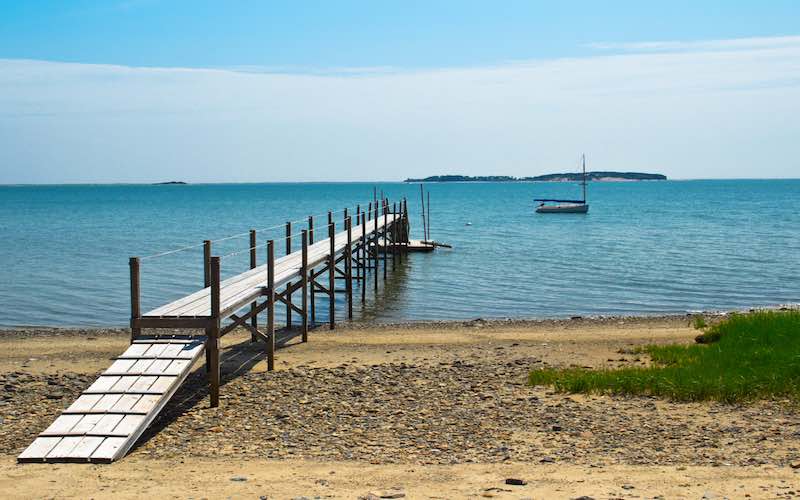
Pleasant Bay on Cape Cod. Photo: Lynne Albright via Shutterstock.
October 1, 2020 (BOSTON, MA) – More than 80 percent of Cape Cod seasonal and year-round residents believe combatting water pollution in the region is a high priority issue, according to a new poll released today. The majority of respondents also believe that addressing the problem should be a shared responsibility, with federal and state governments bearing the brunt of the costs. The poll was commissioned by Conservation Law Foundation and conducted by EMC Research.
“Wastewater pollution is one of the greatest issues facing Cape Cod,” said CLF President Bradley Campbell. “We’ve known for decades that this pollution is destroying the Cape’s bays and ponds and threatens to drag property values and the economy down with it. Residents clearly understand the urgency of this crisis, and it’s about time our officials to end the pattern of do-little and delay and commit to solving the problem. ”
Highlights from the poll findings:
- Pollution in the Cape’s bays and ponds is a high priority issue for voters and seasonal residents. An overwhelming 86 percent of respondents rated water pollution as a high priority issue. These results were consistent across all regions on the Cape and among all demographic subgroups.
- Awareness of the water pollution issue is high. A significant majority (71 percent) of respondents stated they have heard at least something about the water pollution issue on the Cape. When asked for details on what they have heard, many stated specifics about the issue including mentions of nitrogen, septic systems, and runoff.
- Voters and seasonal residents understand the economic impacts of the water pollution issue and favor collaborative solutions to address it. Voters and seasonal residents see value in shared responsibility regarding the costs to address the Cape’s water pollution issues. Over three in five respondents (68 percent) stated the federal government should take on a large portion of the cost, along with large tourist resorts (70 percent) and the state government (67 percent) also contributing their fair share.
CLF experts are available for further comment.
###
